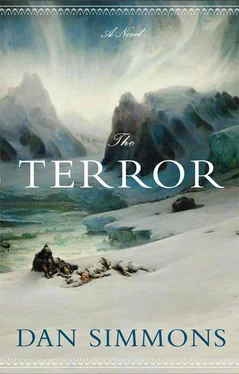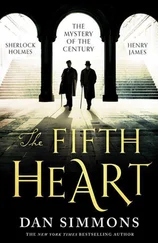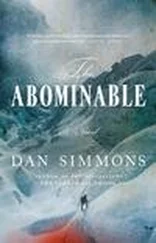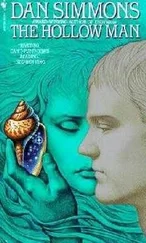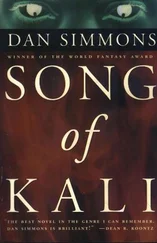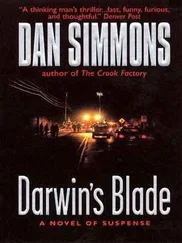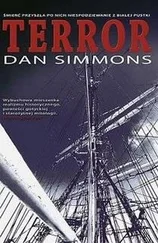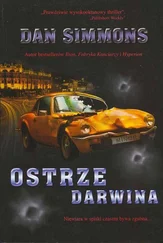Eat Leys first, then the others when they die.
Francis Crozier was so hungry that he could imagine eating human flesh. He would not kill a man in order to devour him – not yet – but once dead, why should all that meat be left behind to rot in the arctic summer sun? Or worse yet, left behind to be eaten by the thing that was after them?
As a new lieutenant in his twenties, Crozier had heard – as all sailing men now heard sooner or later, usually as ship’s boys before the mast – the true story of Captain Pollard in the U.S. brig Essex back in 1820.
Essex had been stove in and sunk, so the few survivors later reported, by an 85-foot sperm whale. The brig went down in one of the emptiest parts of the Pacific and the entire 20-man crew had been out in their boats hunting whales at the time and returned to find their ship sinking fast. Retrieving a few tools, some navigation instruments, and one pistol from the ship, the survivors set off in three whaleboats. Their only provisions were two live turtles they’d captured in the Galapagos, two casks of ship’s biscuits, and six casks of fresh water.
Then they steered the whaleboats for South America.
First, of course, they killed and ate the large turtles, drinking the blood when the meat was gone. Then they managed to capture some hapless flying fish who leapt into the boat by accident; while the men had contrived to cook the turtle meat, after a fashion, the fish they ate raw. Then they dived into the sea, scraped the barnacles from the hulls of their three open boats, and ate those.
Miraculously, the boats encountered Henderson Island – one of those few specks on the endless blue that is the Pacific Ocean. For four days the twenty men captured crabs and stalked gulls and their eggs. But Captain Pollard knew that there were not enough crabs, gulls, or gull eggs on the island to sustain twenty men for more than another few weeks, so seventeen of the twenty voted to take to the boats again. They launched the boats and waved good-bye to their three remaining companions on 27 December, 1820.
By 28 January, the three boats had been separated from one another by storm, and Captain Pollard’s whaleboat sailed eastward alone under the endless sky. Their rations now consisted of one and a half ounces of ship’s biscuit per man a day for the five men in the whaleboat. By not so great a coincidence, this was precisely the reduced ration that Crozier had just secretly discussed with Dr. Goodsir and First Mate Des Voeux for when the last of the salt pork ran out in a few days.
The bit of biscuit and few sips of water had kept Pollard’s men – his nephew Owen Coffin, a freed black man named Barzillai Ray, and two seamen – alive for nine weeks.
They were still more than 1,600 miles from land when the last of the biscuits ran out at the same time as the last of the water was drunk. Crozier had figured that if the biscuits lasted his men another month, they would still be more than 800 miles from human habitation in winter even if they reached the mouth of Back’s River.
Pollard had no conveniently recently deceased men aboard his boat, so they drew straws. Pollard’s young nephew Owen Coffin drew the short straw. Then they drew straws again to see who would do the deed. Charles Ramsdell drew the short straw this time.
The boy wished the other men a tremulous good-bye (Crozier always remembered his scrotum-tightening sense of horror the first time he heard this part of the story while on watch with an older man high in the mizzen of a warship far off Argentina, the old seaman terrifying Lieutenant Crozier by saying good-bye in a trembling boy’s voice), and then young Coffin had laid his head on the gunwale and closed his eyes.
Captain Pollard, as he later testified in his own words, had given Ramsdell his pistol and turned his face away.
Ramsdell shot the boy in the back of the head.
The five others, including Captain Pollard, the boy’s uncle, first drank the blood while it was warm. Although salty, it was – unlike the endless sea around them – drinkable.
Then they sliced the boy’s flesh from his bones and ate it raw.
Then they broke open Owen Coffin’s bones and sucked out the marrow to the last shred.
The cabin boy’s corpse had sustained them for thirteen days, and just when they were considering drawing lots again, the black man – Barzillai Ray – died of thirst and exhaustion. Again the draining, drinking, slicing, cracking, and sucking of marrow sustained them until they were rescued by the whaler Dauphin on 23 February, 1821.
Francis Crozier never met Captain Pollard but he had followed his career. The unlucky American had retained his rank and gone to sea only once more – and once more was shipwrecked. After being rescued the second time, he was never again entrusted with command of a ship. The last Crozier heard, only a few months before Sir John’s expedition sailed three years earlier in 1845, Captain Pollard was living as a town watchman in Nantucket and was universally shunned by both townspeople and whalers there. It was said that Pollard had aged prematurely, spoke aloud to himself and his long-dead nephew, and hid biscuits and salt pork in the rafters of his home.
Crozier knew that his people would have to make a decision about eating their own dead within the next few weeks, if not the next few days.
The men were approaching the point where they were too few and those few too weak to man-haul boats, but the four-day rest on the ice floe from the 18th to the 22nd of July had not renewed their energy. Crozier, Des Voeux, and Couch – young Lieutenant Hodgson, while technically the second in command, was given no authority by the captain these days – rousted men and ordered them out hunting or repairing sledge runners or caulking and rerepairing the boats rather than let them lie in their frozen sleeping bags in their dripping tents all day – but essentially all they could do was sit on their connected floes for days since too many tiny leads, fissures, small areas of open water, and patches of thin and rotten ice surrounded them to allow any progress south or east or north.
Crozier refused to turn back west and northwest.
But the floes were not drifting in the direction they wanted to go – southeast toward the mouth of Back’s Great Fish River. They merely milled and circled upon themselves as the pack holding Erebus and Terror had for two long winters.
Finally, on the afternoon of Saturday, 22 July, their own floe began cracking up enough that Crozier ordered everyone into the boats.
For six days now they had floated, tethered together by lines, in patches and leads too short or small to row or sail in. Crozier had the one sextant left to them (he had left the heavier theodolite behind), and while others slept he took the best readings he could during the occasional short break in cloud cover. He reckoned their position to be about eighty-five miles northwest of the mouth of Back’s River.
Expecting to see a narrow isthmus ahead of them any day now – the presumed peninsula connecting the bulb of King William Land to the previously mapped Adelaide Peninsula – Crozier had awakened in the boat at sunrise on the morning of Wednesday the 26th of July to find the air colder, the sky blue and cloudless, and glimpses of land darkening the sky more than fifteen miles away to both the north and south.
Calling the five boats together later, Crozier stood in the bow of his lead whaleboat and shouted, “Men, King William Land is King William Island . I’m certain now that there’s sea ahead all the way east and south to Back’s River, but I’ll bet my last quid that there’s no land connecting the cape you see far to the southwest there and the one you see far to the northeast. We’re in a strait. And since we have to be north of the Adelaide Peninsula, we’ve completed the goal of the Sir John Franklin Expedition. This is the North-West Passage . By God, you’ve done it.”
Читать дальше
